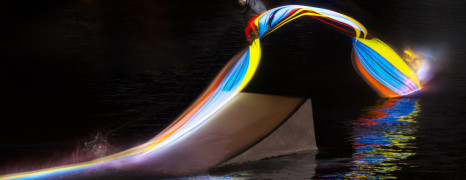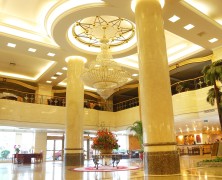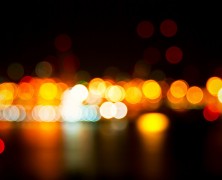Red Bull is well known for creating iconic, captivating events that promote an active, exciting lifestyle. A terrific example involved “painting with light” – using Flexfire LEDs to illuminate the actions of professional wakeboarders. Photographer Patrick Rochon shot three Red Bull wake riders at Orlando, Florida’s OWC Cable Park as part of a photography event called Snap! Orlando. In preparation for the shoot, producer Evan Jones outfitted the wakeboards with waterproof strip lights from Flexfire LEDs. The lights were part of an intricate marriage of technology and skill, with athletes and production crew eager to create something special for Red Bull’s Illume Image Quest. The Red Bull wakeboard video was a tremendous success, resulting in one of the most viral videos in company history. This behind-the-scenes video offers a great look at some of the challenges the team faced, and even shows them installing our strip lights onto the boards in preparation. And of course, there are some fantastic images of the “painted” wakeboarders in...
Solar LED Lights: The Marriage Of Nature and Technology...
posted by Taran Volckhausen
By tapping into the sun’s immense energy, “transformative” LED technology is providing clean, efficient lighting for millions of people around the world. Solar LED lights represent not only a dream scenario for the environmentally conscious, but also a chance to provide light in developing countries where access to electrical grids is scarce. The LED industry has come a long way in the past decade. To illustrate this process, the 2014 Nobel Prize in Physics was awarded to Isamu Akasaki, Hiroshi Amano, and Shuji Nakamura for inventing the blue LED in the early 1990s, which ultimately allowed for the creation of white LED light. “The LED lamp holds great promise for increasing the quality of life for over 1.5 billion people around the world who lack access to electricity grids,” the Royal Swedish Academy of Sciences noted in their Nobel Prize press release. “Incandescent light bulbs lit the 20th century; the 21st century will be lit by LED lamps.” One of the great opportunities provided by LEDs is the harmonious relationship they hold with clean, renewable solar energy. Photovoltaic panels create solar energy by converting the sun’s rays into direct current (DC) electricity. This DC current, in contrast to the alternating current (AC) electricity of the conventional grid, is the same form of electricity used by LED lighting. In fact, photovoltaics are also composed of diodes that in many ways are the inverse technology of LEDs. Most of the time, the electricity collected by solar photovoltaics is not used at the exact moment the sun is shining. This necessitates battery storage to hold this collected energy for later use. Due to their compact size, astounding efficiency, and advanced programability, LEDs are clearly the most effective type of light to draw power from these expensive batteries. During the past decade, the...
Hotel Lighting With LED Strip Lights...
posted by Taran Volckhausen
Hotel guests are quick to develop their first impressions, and lighting plays a crucial role in this process. Even if a hotel’s interior design is well planned, ineffective lighting will throw a wrench in the entire presentation, leaving guests feeling uncomfortable and uninvited. Advancements in LED chip technology have allowed for a whole range of attractive, efficient, cost-saving options for hotels, hostels and guest houses worldwide. In this post we will explore some of these options for hotel lighting with LED strip lights in particular—focusing on lobbies, bedrooms, bathrooms, bars and restaurants, as well as pools and patios. Hotel Lobby Lighting Hotel lobby lighting strongly impacts a guest’s initial impression of a hotel, setting the stage for a positive experience throughout his or her stay. For luxury hotels or those seeking a sleek, modern feel, indirect cove lighting is an excellent choice. The technique involves running LED strip lights in ledges or recesses along the top edge of a wall or ceiling mounts, to shower indirect, evenly distributed light across the lobby. The technique is popular because of the high quality, even application of light it produces. It also conceals light fixtures, giving the lobby a more elegant, simplified feel. For lobby wall decorations and artwork, use high CRI LED strip lights as accent lighting to render colors as vividly as possible, providing a particularly stunning presentation. Hotel Guest Room Lighting Guests at your hotel will remember the atmosphere of the rooms, and lighting is sure to play a critical role. For hotel room lighting, as with hotel lobbies, indirect cove lighting is a great option because of the luxurious, elegant, and evenly distributed light it provides for your guests. Setting up LED remotes and dimmers in the room will give guests control of the lights’ temperature and...
Top 4 Reasons Why LED Lights Are Energy Efficient...
posted by Taran Volckhausen
LED lights are commonly discussed in the news today, for a variety of different reasons. Above all, there’s a great deal of emphasis on the fact that they’re considered “energy efficient”. But what does this mean exactly, and is it really the case? For a better understanding of this important topic, here are the top 4 reasons why LED lights are energy efficient, making them the best choice for residential, commercial and industrial applications. Lots of Light and Little Heat LEDs use only a fraction of the energy used by CFLs or incandescents to produce the same amount of light. For example, the standard 40 watt incandescent bulb produces 400 to 500 lumens (a measurement of light brightness). To produce this light with CFLs, you would need to use 8 to 12 watts. LEDs are simply more efficient; Flexfire LEDs’ UltraBright strip lights, for example, each foot of reel produces 400 to 670 lumens for just 4.4 to 7.5 watts. The reason for this is that the vast majority of energy that goes into LED lights is transferred into light. When properly engineered, many LED lights operate near 80% efficiency. That means 80% of the energy used becomes light. Incandescent bulbs on the other hand, work at just 20% efficiency, meaning that 80% of the energy used is transferred into heat—instead of light. The U.S. Energy Information Administration estimates that 17% of the total energy used by the United States’ commercial and residential sectors in 2012 went to lighting. That means switching to more efficient LEDs could have a dramatic impact on the country’s energy consumption. Longer Lasting When a light bulb goes dead, it costs energy to replace it. First, a factory must use energy to build its replacement. Then more energy is used...
Wearable Blue LED Light Therapy To Treat Psoriasis Vulgaris...
posted by Taran Volckhausen
Philips has announced the release of a wearable device that uses blue LED light to manage mild to moderate cases of psoriasis vulgaris. The device, which will be available through distributors this month in Germany, Netherlands and the U.K., is called Philips BlueControl and will offer an effective form of treatment for the skin condition without requiring medication. Psoriasis is a skin condition that effects 125 million people across the planet. Of those suffering from the condition, 80% have the most common form, psoriasis vulgaris. Also known as plaque psoriasis, the condition causes plaques on the skin in the form of red raised skin and flakey “scales” that arise when the skin cells die. Symptoms of the condition include itching, pain and cracking. Needless to say, the physical and psychological effects can be debilitating for those patients suffering from this disease. While the precise causes of psoriasis are unknown, it’s generally accepted that the condition arises following damage to the immune system, enzymes and other materials, which leads to uncontrollable growth of keratinocytes (immature skin cells that produce keratin, a tough protein found in nails, hair and skin) that triggers the skin flakes and inflammation as the body works to rid itself of the growth. Existing treatments to reduce the symptoms of the condition include topical applications, prescription drugs and UV phototheraphy—a treatment which taxes patients and medical services by requiring frequent visits to doctors’ offices. Looking for a better way to treat this incurable condition, researchers have found simple LED blue light treatment slows rapid cell division and can also reduce inflammation, which are the root causes of psoriasis vulgarsis. Conducting clinical trials in Germany, Philips worked with researchers at the University Hospital of Aachen to investigate the safety and efficacy of the Philips BlueControl device to manage...










